Should you join a MAT?

In his recent letter to all Academy School Heads, the School Commissioner has now confirmed, the long held suspicion, that academies are being encouraged to join together into groups in a formal way, predominantly as Multi Academy Trusts (MATs). MATs have been highly successful, providing the obvious benefit of economies of scale, but some would argue that in reality the pressure to join one is more than just ‘encouragement’.
Why a MAT model?
There are a number of advantages of becoming part of a MAT, such as:
- Economic benefits, such as centralised services
- Sharing best practice and expertise
- The ability to focus funds where they’re most needed
- Increased and flexible staffing resources
- The opportunity to establish succession planning programmes and, in doing so, retain good staff who might otherwise move on, including headteachers
- Enables local governors and SLT to focus on teaching and learning, due to the support of the Trust Board.
However, governing bodies must decide whether the benefits of collaboration outweigh the loss of autonomy. Disadvantages include the need to manage a diminished feeling of independence, which, after all, is seen to be a key advantage of conversion, and a resistance by some schools to a perception of being ‘taken over’. Another potential pitfall is the need to ensure that risks of failure of one school do not affect the fortunes of another school within the MAT. Furthermore, if different categories of school, such as community and voluntary aided schools, are considering converting together they must be confident that a MAT is the right model for all the schools because of the changes in governance that arise.

Alternative Structures
For schools that are looking to join together, but retain more of their autonomy than in a MAT, there are two other possible models, Umbrella Trusts and Collaborative Partnerships. We haven’t seen many of these yet in the South West, but they may become more popular as academies feel the pressure to join together. It’s definitely something worth considering if you’re being ‘encouraged’ to join a MAT but don’t want to lose your autonomy.
Umbrella Trusts (UT)
The UT model allows schools to retain their autonomy with a separate academy trust, but also to formalise collaboration between the academies. In an UT, each school will have its own separate academy trust and the governing body will be responsible for overseeing the running of the academy on a day-to-day basis. Each individual academy is linked together by an overarching UT, which will have representatives drawn from each school. A Partnership Agreement sets out how the UT and the academies within the group will work together. It provides a framework for co-operation and may focus on both financial matters and school improvement. The UT will have the right to intervene in the running of each academy trust, depending on the individual academy’s level of performance.

Collaborative Partnerships
A Collaborative Partnership provides the highest degree of autonomy , whilst allowing for collaboration within the group, as there are no shared governance arrangements. Each academy trust will have its own members and governors who are responsible for the day to day running of the school. The schools in the group will enter into a formal Collaborative Partnership Agreement that will set out how the schools will work together, what they hope to achieve and how they plan to achieve it. Schools can minimise costs through joint purchasing and sharing resources. In a Collaborative Partnership, schools will be able to share expertise to raise standards and meet agreed improvement targets.







